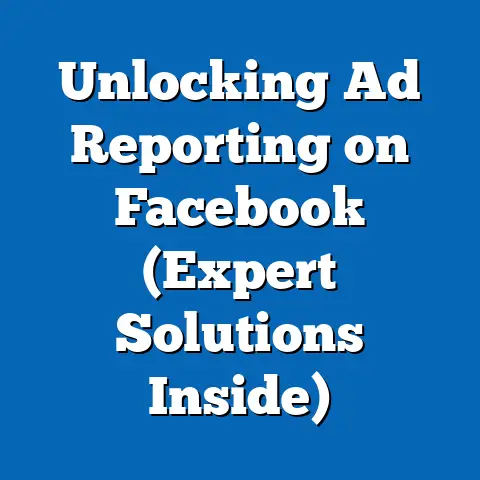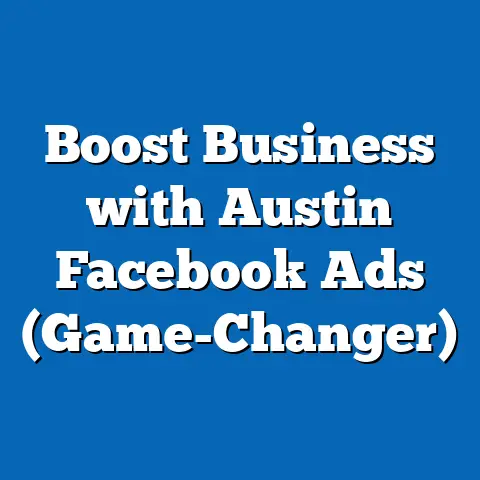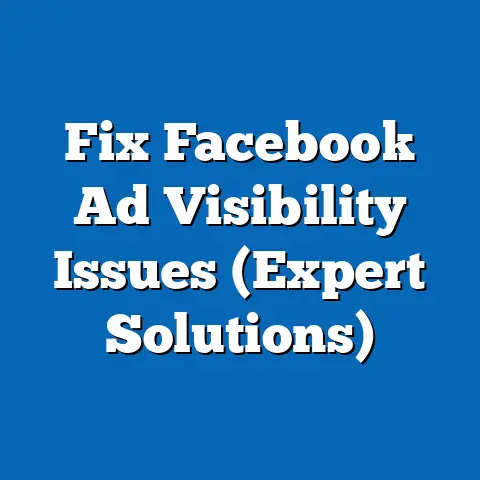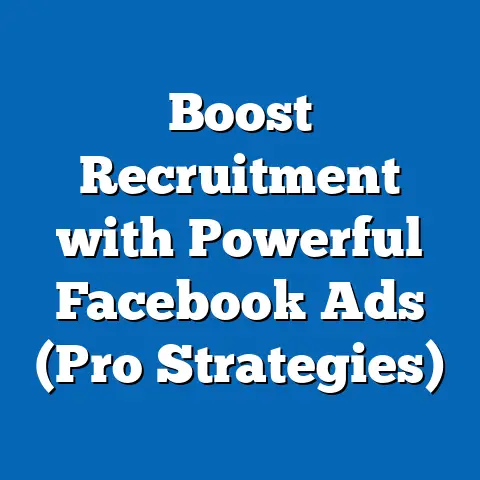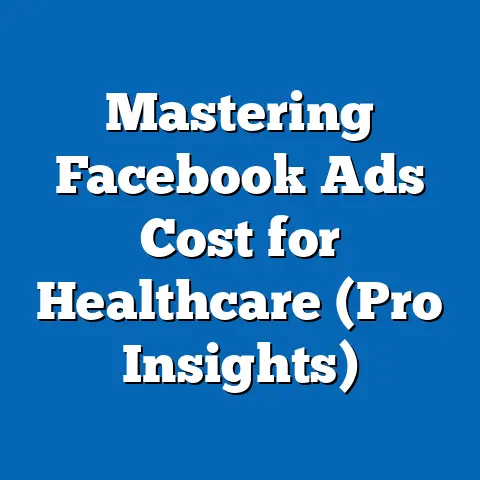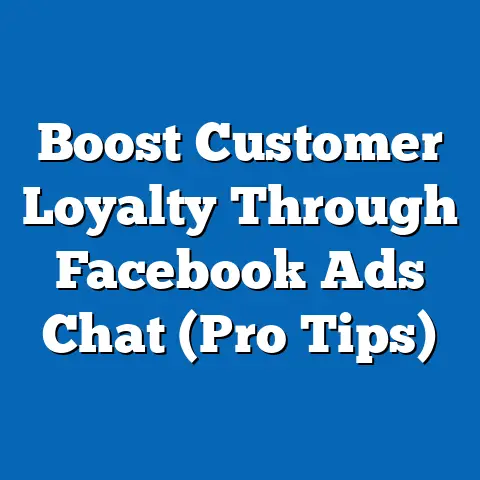Maximize fb ad Performance with Top Text Strategies (Pro Tips)
Facebook ads are a powerhouse for reaching potential customers, but let’s face it: a stunning image alone isn’t always enough. I’ve seen firsthand how the right words can be the difference between a scroll-past and a conversion. In this article, I’m diving deep into the world of Facebook ad text, sharing pro tips to help you craft compelling copy that stops thumbs and drives results, especially for smart home businesses.
Why Ad Text Matters: More Than Just Pretty Pictures
Think of your Facebook ad as a miniature sales pitch. The visual grabs attention, but the text seals the deal. I’ve seen countless campaigns where a simple tweak to the headline or body copy dramatically boosted click-through rates and conversions.
Ad text is your opportunity to:
- Connect emotionally: Speak to your audience’s desires, fears, and aspirations.
- Highlight value: Clearly communicate the benefits of your product or service.
- Drive action: Tell people exactly what you want them to do next.
Statistics Don’t Lie
Numbers don’t lie. Studies consistently show that compelling ad copy significantly impacts ad performance. According to a recent study by Neilson, ads with a strong emotional connection performed twice as well as those with a purely rational appeal. This is especially true for smart home products, where the emotional benefits of security, convenience, and peace of mind are paramount.
Key Takeaway: Don’t underestimate the power of words. Invest time in crafting compelling ad text that resonates with your target audience and drives action.
Crafting Compelling Headlines: Your First Impression
Your headline is the first (and sometimes only) thing people see. It needs to be attention-grabbing, concise, and relevant. I’ve spent hours testing different headlines, and here are some techniques that consistently deliver results:
- Ask a question: “Tired of Paying High Energy Bills?” This immediately engages the reader and makes them think.
- Make a bold statement: “Secure Your Home with the Latest Smart Technology.” This establishes authority and creates a sense of urgency.
- Use numbers and lists: “5 Smart Home Devices That Will Simplify Your Life.” Numbers are naturally eye-catching and suggest a quick, easy read.
- Promise a specific benefit: “Save Money and Stay Safe with Our Smart Home Security System.” This clearly communicates the value proposition.
Real-World Examples
Let’s look at some examples of high-performing headlines for smart home products:
- “Control Your Home from Anywhere with [Brand Name].” (Focuses on convenience)
- “Protect Your Family with Our Smart Home Security System.” (Appeals to the desire for safety)
- “Upgrade Your Home to a Smart Home Today!” (Creates a sense of aspiration and modernization)
Pro Tip: A/B test different headlines to see what resonates best with your audience. Facebook Ads Manager makes this easy to do. I personally use this feature religiously, often running 3-5 headline variations at once to continuously optimize.
Key Takeaway: Your headline is your hook. Make it compelling, relevant, and benefit-driven.
Utilizing the Power of Emotion: Connect on a Deeper Level
People buy with their emotions and justify with logic. This is especially true for smart home products, which often tap into deep-seated desires for security, comfort, and control.
Here are some emotions you can leverage in your ad text:
- Safety: “Protect your loved ones with our smart home security system.”
- Convenience: “Simplify your life with our easy-to-use smart home devices.”
- Comfort: “Create the perfect ambiance with our smart lighting and temperature control.”
- Innovation: “Experience the future of home automation with our cutting-edge technology.”
- Peace of Mind: “Know your home is safe and secure, even when you’re away.”
Emotional Advertising in Action
Consider these examples:
- A security company: Instead of saying “Our system has 24/7 monitoring,” they could say “Sleep soundly knowing your family is protected by our always-vigilant system.”
- A smart lighting company: Instead of saying “Control your lights with your phone,” they could say “Create the perfect mood for any occasion with our smart lighting system, from cozy movie nights to vibrant dinner parties.”
Pro Tip: Understand your target audience’s emotional triggers. What are their biggest fears? What are their deepest desires? Use this knowledge to craft ad text that speaks directly to their hearts. I find creating detailed customer personas incredibly helpful for this.
Key Takeaway: Don’t just sell features; sell benefits that resonate emotionally.
Clear and Concise Messaging: Get to the Point
In the fast-paced world of social media, people have short attention spans. Your ad text needs to be clear, concise, and easy to understand.
Here are some tips for crafting effective messaging:
- Use simple language: Avoid jargon and technical terms that your audience may not understand.
- Focus on the benefits: Highlight the value proposition of your product or service.
- Get to the point quickly: Don’t bury the lead. Tell people what you want them to know upfront.
- Use bullet points: Break up large blocks of text and make it easier to scan.
Concise Messaging Examples
- Instead of: “Our advanced smart home system integrates seamlessly with your existing infrastructure and provides unparalleled security features.”
- Try: “Protect your home with our easy-to-install smart security system.”
Pro Tip: Read your ad text aloud. Does it sound natural and conversational? If not, revise it until it does.
Key Takeaway: Clarity is key. Make it easy for people to understand the value of your product or service.
Strong Calls to Action: Tell People What to Do
Your call to action (CTA) is the final nudge that encourages people to take the desired action. It needs to be clear, concise, and compelling. I can’t stress this enough: a weak CTA can kill an otherwise great ad.
Here are some tips for crafting effective CTAs:
- Use action-oriented language: “Shop Now,” “Learn More,” “Get Started,” “Download Now.”
- Create urgency: “Limited-Time Offer,” “Sale Ends Soon,” “Get Your Free Quote Today.”
- Be specific: “Download Our Free Smart Home Guide,” “Schedule Your Free Consultation,” “Shop the Sale Now and Save 20%.”
- Match the CTA to the offer: If you’re offering a free trial, use “Start Your Free Trial.” If you’re selling a product, use “Shop Now.”
CTAs for Smart Home Advertisements
- “Learn More About Smart Home Security” (For informational content)
- “Get a Free Quote for Smart Home Installation” (For lead generation)
- “Shop Smart Home Devices Now” (For e-commerce)
- “Download Our Free Smart Home Guide” (For building your email list)
Pro Tip: Test different CTAs to see what performs best. Facebook Ads Manager allows you to A/B test different CTA buttons.
Key Takeaway: Tell people exactly what you want them to do next. A strong CTA can significantly boost your conversion rates.
Incorporating Keywords and SEO Strategies: Improve Visibility
While Facebook ads aren’t directly impacted by traditional SEO in the same way as website content, incorporating relevant keywords into your ad text can improve visibility and targeting.
Think about the keywords that potential customers are searching for when looking for smart home solutions:
Key Takeaway: Use relevant keywords to improve visibility and ensure your ads are reaching the right people.
My Personal Facebook Ad Text Strategies
Over the years of running Facebook ad campaigns, I’ve developed some personal strategies that have consistently delivered results. Here are a few of my go-to techniques:
- The “Pain Point/Solution” Formula: I start by identifying a common pain point that my target audience experiences. Then, I present my product or service as the solution. For example: “Tired of high energy bills? Our smart thermostat can help you save money and stay comfortable.”
- The “Question/Answer” Approach: I start with a compelling question that grabs attention. Then, I answer the question in the body copy. For example: “Want to make your home safer and more convenient? Our smart home security system is the answer.”
- The “Benefit-Driven” Approach: I focus on the specific benefits that my product or service provides. For example: “Enjoy peace of mind knowing your home is protected by our smart security system.”
I also constantly analyze my ad performance data to identify what’s working and what’s not. I use this information to continuously optimize my ad text and improve my results.
Conclusion: Test, Refine, and Conquer
Optimizing your Facebook ad text is an ongoing process. Don’t be afraid to experiment with different headlines, body copy, and CTAs. Continuously test and refine your ad copy based on audience feedback and performance analytics.
By implementing the strategies outlined in this article, you can craft compelling ad text that captures attention, resonates with your target audience, and drives results for your smart home advertising campaigns on Facebook. Remember:
- Headlines matter: Make them attention-grabbing and benefit-driven.
- Emotion sells: Connect with your audience on a deeper level.
- Clarity is key: Make it easy to understand the value proposition.
- CTAs drive action: Tell people what to do next.
- Keywords improve visibility: Reach the right audience.
Now go forth and craft some killer Facebook ad copy! Your smart home business will thank you.

